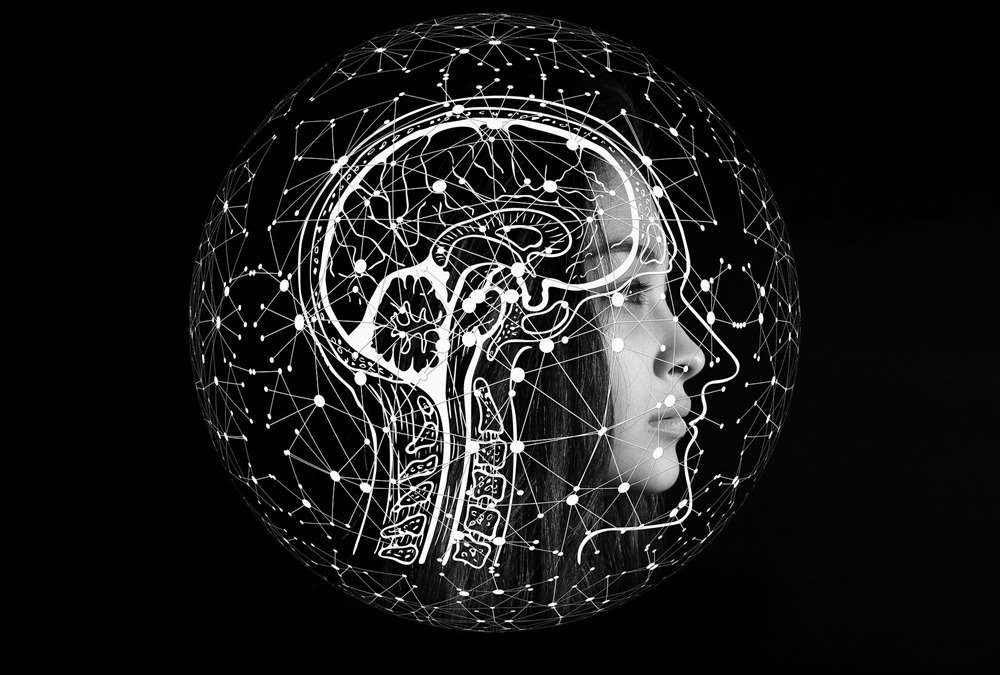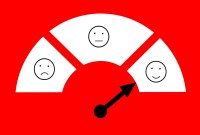- Home
- Business Processes
- Industry Knowledge
- Aerospace Industry
- Automotive Industry
- Banking Domain
- BFSI Industry
- Consumer/ FMCG Industry
- Chemicals Industry
- Engineering & Construction
- Energy Industry
- Education Domain
- Finance Domain
- Hospitality Domain
- Healthcare Industry
- Insurance Domain
- Retail Industry
- Travel and Tourism Domain
- Telecom Industry
- Leadership Skills
- eLearning
- Home
- Leadership Skills
- Team Leadership
- What is Communication?
What is Communication?
Have you ever noticed how we express ourselves or interact with each other? Have you ever wondered what communication is and what role it plays in our lives? One may wonder if communication is so omnipresent and integral to our lives, why study communication at all? We need to study communication because it is a complex process that consists of many elements and is also beset with a number of barriers and there is a need to remove the barriers so that the communication process is effective.
We all engage in communication with others right from birth. When we interact with others we are communicating with them. It is an integral part of our lives and is intertwined with all the activities undertaken by us. Human beings communicate right from the moment they are born till death and it will not be an exaggeration to say that communication is indicative of life itself. Thus communication can be equated with other basic needs of life such as food, clothes, and shelter as any person, group, or community cannot survive without communication.
The ability to communicate is a vital ladder to all career and personal development. Without sufficient communication skills, it is possible that there will be little movement upwards (or increasingly these days, sideways). If you are planning one day to develop your own ‘career’ in self-employment then communication skills will be critical to any chances you have of gaining, holding, and enlarging your client base. There is considerable evidence to suggest that those who lack a range of well-developed communication skills find it difficult to advance their careers. This shouldn’t really surprise us if we consider just how much time we spend communicating with our colleagues, managers, and customers, and how the quality of that communication will affect our relationships with these.
Communication is more than just messaging or swapping information. Human communication is much too complicated and involved. There are thousands of unconscious nonverbal behaviors involved in even a single conversation and we are usually aware of only a few of them during the course of the conversation. Communication facilitates the sharing of common experiences with others. It involves sharing an idea, thought, feeling, or information with others, which includes thinking, dreaming, speaking, arguing, and so on. Thus the scope of communication is very wide.
It involves not just words, but the use of all our senses. With face-to-face dialogue, our facial expression, tone, body language, ability to listen with patience, all contribute to the conveying of messages and information between people. We may communicate with ourselves while thinking, dreaming, reading, watching something, or listening to something. We communicate face-to-face with another person or speak with people in group situations. Communication is both an individual and a collective necessity. Human beings cannot be fully human without communication.
Now we live in an age of communication characterized by speed, efficiency, and the ability to transcend physical or geographical limitations. We can also communicate with people located in widespread places, who may be from a heterogeneous group and be anonymous to each other, with the help of technology. Being able to share information quickly between people has meant that a disaster in one part of the world can be responded to in another; it has led to the fall of corrupt governments, as people have been able to unite in challenging authoritarian regimes. People in remote areas fighting injustice have linked up with people on the other side of the world who can support their cause. As with everything, new technologies such as e-mail and text messaging have the potential to be positive or negative.
Communication generally means the exchange of messages with others but it can also be with one's own self where the self is the sender and receiver of messages. Communication is part skill, part art, and part science. It is a skill as it involves certain fundamental techniques, it is an art as it involves creative challenges, and it is a science because certain verifiable principles are involved in making communication more effective. All this makes communication a complex process. Once a human being has arrived on this earth, communication is the single most important factor determining what kinds of relationships he makes and what happens to him in the world.
Definitions of Communication
We need to understand the basic principles of communication in order that we may grasp the way communication influences the lives of individuals and society. It is also necessary to understand the way the various instruments of communication (traditional and modem) function. Different scholars have defined communication in various ways. Some of them describe it as 'the transfer of meaning', 'transmission of stimuli', 'one mind-affecting other' or 'sharing of experiences on the basis of commonness'. To understand the concept of communication, let us examine the various definitions of communication as given by different scholars.
The word communication has its origin in the Latin word 'communis' which means 'to make common'. When we communicate we are trying to establish 'commonness' with someone. That is, we are trying to share information, an idea, or an attitude.
Dictionary Definition of Communication
The dictionary definition is 'to exchange (thoughts) or make known (information or feelings) by speech, writing or other means, to transmit'.
The New Webster's dictionary defines communication as "the act or fact of communicating transmission, the imparting or interchange of thoughts, opinions, or information by speech, writing or signs that which is communicated or imparted; a document or message imparting views or information."
According to the Oxford dictionary "communication is the imparting, conveying or exchanging of ideas, knowledge, etc., by means of speech, writing or any attempt to define communication, has to take into consideration the idea of mutuality and commonness, an exchange, a shared environment, a social relationship among the participants and the existence of a common need, urge, aim or goal.
Process Definition of Communication
Communication has also been defined as a scientific study which involves the art of communication so that skilled communication can be produced.
Communication is the process whereby we create and exchange messages.
According to Denis McQuail, communications are a "process which increases commonality". He describes human communication as" the sending from one person to another of meaningful messages."
Theodorson and Theodorson stated that “communication as a process of transformation of information ideas, attitudes or emotions from one person or group to another or others primarily through symbols.
Communication is not a static act but a dynamic process, which is continuous in nature and vital for teaching and learning. It involves the usage of a channel. This channel could be signs, symbols, or verbal/written language. For communication to be complete and effective it has to achieve the desired objectives as intended by the communicator.
Schramm, (1971) conceived of communication as a process of transferring feelings, motivations, ideas, and knowledge from one mind to another, in a way in which the receiver was seen as a passive agent.
Baker Brownell uses the terms "direct" and "indirect" communication. Direct communication is a function of 'identification of people with one another. Indirect communication is a "process wherein something converted into symbols is carried over from one person to another."
Theodore Newcomb defines communication as that process by which people influence each other or leave impressions on others.
Communication is a process of sharing or exchange of ideas, information, knowledge, attitudes, or feelings among two or more persons through certain signs and symbols leading to the desired response as intended by the communicator. Even our behavior can communicate messages.
Other Definitions of Communication
To communicate' is defined as 'to impart, bestow, or convey, to make known, give by way of information.
Communication is said to take place when an area of common experience exists.
Communication is a social process of interaction through messages.
Charles Morris defines communication as "the establishment of commonage."
According to Shannon’s Mathematical Theory of Communication, Communication includes "all of the procedures by which one mind may affect another...or one mechanism affects another mechanism."
George Lundberg uses communication to designate interaction with signs and symbols.
Ashley Montagu and Floyd Matson defined it as, “Communication is more than a dash of symbols, more than media and message, information and persuasion. It is not a matter of 'isolated entities sending discrete messages' back and forth. It is an essential human connection. Whether clear or garbled tumultuous or silent, deliberate or fatally inadvertent, communication is the gerund of meeting and the foundation of community.' It comprises all modes of behavior and expression which establish, project, and promote ideas, principles, hypotheses, beliefs, and faiths which bind human societies in their various enterprises and activities.
Together these factors give us a "communication situation" in which the process of communication takes place.
Related Links
You May Also Like
-
Generating Ideas using SCAMPER
SCAMPER is an activity-based thinking process that can be performed by Cooperative learning. SCAMPER is an acronym that provides a structured way of assisting students to think out of the box and enhance their knowledge. This can be used in the organizational context as a technique for creative problem solving and as a toolkit to generate fresh ideas.
-
Many people think communication is easy. It is said that communication can never be a hundred percent complete. Many factors are involved in the process of communication and something can always go wrong with one or more of these. It becomes difficult and complex when we put barriers in communication. Recognize barriers to interpersonal communication and examine specific strategies for overcoming those barriers.
-
A manager or an employee in an organization who is experiencing a high level of stress may develop high blood pressure, ulcers, irritability, difficulty in making routine decisions, loss of appetite, accident proneness, and the like. These can be subsumed under three general categories, physiological, psychological, and behavioral symptoms. Stress can give rise to a number of changes.
-
At different points in your professional career, it is helpful to identify your core values. Values are the qualities considered to be the most important guiding principles that determine the priorities in your life and greatly influence your career choices. Your career brings happiness when it is in agreement with the beliefs you have about what is important and meaningful to you. Awareness of your values will help you develop a clearer sense of what's most important to you in life.
-
Communication is defined as the process of meaningful interaction between two or more persons with a view to arriving at a common meaning and understanding. There are different types of communication and these are used on different occasions. In this section on communication skills, Technofunc will equip you with the skills most needed in today’s dynamic, demanding workplace.
-
Communication performs many functions, such as informing and generating awareness, educating, persuading, motivating, entertaining, etc. The functions of communication in an organization are to inform, persuade, and motivate. Employees need to have effective organizational communication in order to achieve excellent job performance. The communication between the top management and the employee needs to be effective for better work culture.
-
Communication has as its central objective the transmission of meaning. The process of communication is successful only when the receiver understands an idea as the sender intended it. How does a message or an idea travel from one person to another? To transmit our message, we engage in a sensitive and complex process of communication, with different elements like sender, message, channels, receiver, noise, and feedback.
-
Storming Stage of Team Development
Storming is the second stage of team development and this stage is characterized by a bid for power and inter-personal conflicts. Learn the key factors that occur in the storming stage and the strategies that a team leader can adopt to pass this stage of high winds
-
This style is characterized by leaders making decisions for others and expecting followers to follow instructions. The directive leader is adept at giving instructions, setting expectations, and establishing timelines and performance standards. However, it is possible for the same leaders to display both directive and supportive behavior as per the demands of the situation.
-
Certain generally accepted truths or principles of communication are important to consider when communicating with others. These principles hold true for all people in every culture. By understanding these principles, you will experience greater communication effectiveness. An effective communication system is one that achieved its objectives. Communication is effective where there are no barriers to communication.
Explore Our Free Training Articles or
Sign Up to Start With Our eLearning Courses

About Us
Learning
© 2023 TechnoFunc, All Rights Reserved










